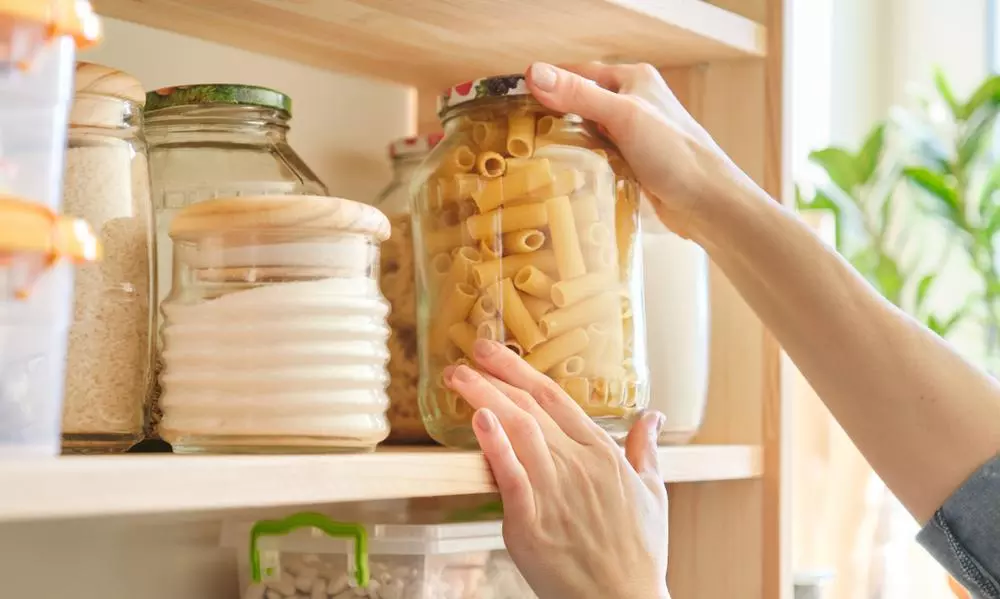Don't let fungus take the fun out of the monsoon
Here are 6 tips on storing ingredients during the rainy season to keep the fungus free
- By Aayushi VichareLoading...
- | 24 Aug 2022 10:00 AM IST
 X
X
No matter how romantic or scenic the showers might look outside, you get a reality check once you step into the kitchen. You grab a slice of bread to put together a grilled cheese, and there it is, staring right back at you: mold! Fungus is the bane of the rainy season. And to save you from such situations we've listed some hacks and manageable ways to tackle the issue. These tips will save your eatables and the time spent on last-minute damage control, in the middle of a perfect day.
Head to your kitchen right away to fix things.
1.Casserole to the rescue
It is crucial to store items like bread, chapatis or perishable eatables in a casserole or airtight container. As the monsoons come with a certain level of humidity favouring breeding grounds for fungus. To break the chain, ensure proper storage.
2. Dry store your grains
Grains can easily get infested in monsoon due to damp weather. To circumvent this, first air-dry the grains by spreading them on a sheet of newspaper under the fan or in a place with good ventilation. Once they are nice and dry, put them in their respective containers and always check that they are shut properly. This process will eliminate the formation of fungus.
3. Make most of that fridge
A fridge is a temporary-but-good place to store your food, where the temperature is too cold for mold formation. If you have leftovers, store them in the fridge and consume them within a day or two. While the refrigerator may be your saviour, make sure it is cleaned regularly to get rid of old food. Also remember to empty and clean the drip tray once in a while. It is key to remember that fungi love moist areas and the best way to get rid of it is to keep the area, surrounding or container dry.
4. Vinegar your way out
Vinegar is the arch-nemesis of fungi. To avoid your fruits and vegetables from becoming a hotspot for fungus, wash them with vinegar. Rinse your veggies thoroughly under tap water and then take a bowl full of water and add two tablespoons of vinegar to it. Soak your fruits and vegetables in this solution for ¾ minutes and then, rinse again. Pat dry them and store in the fridge or your fruit basket.
5. Throw in the kitchen towel
Vegetables in monsoon turn slimy and black when stored in plastic bags and/or are not cleaned properly. This is due to the trapped moisture content. To avoid this situation, make sure you clean your veggies as soon as you buy them. Then collect all the containers from the kitchen and line them with kitchen towels, add your leafy vegetables to the respective box and cover it with another kitchen towel before closing it. The paper will absorb any extra moisture from the vegetables preventing them from wilting, turning black or catching mold.
6. Keep the bacteria at bay
Lastly, clean and dry surroundings greatly reduce the occurrence of fungus. Cleaning your kitchen regularly is one way to go about this if you don't want to deal with mold. Use phenol disinfectant to clean the floors, cabinets and shelves of your kitchen, regularly. And remember to keep them dry before you stock them with eatables.
We hope you've noted these points and are going to apply them soon in your kitchen to avoid a sticky ' situation this monsoon.

Aayushi Vichare
Aayushi is that friend who won’t let you take a bite without capturing it. For her, the easiest but still thoughtful way of making someone feel special is by cooking or getting them their favourite food. Currently, she’s on an expedition to integrate all her favourites: food, social media and marketing, so that you don't miss the hottest spot in town and you know where to eat those crispy and juicy chicken wings.


